It was a pact of Faustian proportions: learn to measure time so you can organise your days, weeks, years, your whole life even; but in return you will know your time is finite. As the arbiter of our limited time on Earth, it makes sense to find representations of Death on the device we most use to measure it: the wristwatch. The use of skulls in the design of watches embodies the idea that death draws ever closer with each passing minute; one could actually witness their lives ebb away with the continuous movement of the watch’s hands.
The scientific revolution and the age of measurement in the mid 18th century brought to mankind the realisation that the laws and movement of the universe could be known, that distance and time were under human control. Navigation by the lunar distance became a reality: knowing the distance and angle from the celestial body to your location on earth, once triangulated, would let you know how long and how far you’ve travelled. Distance, time, and your place in the heavens were now known quantities.
The institutionalisation of science into organisations such as the Royal Society allowed knowledge to be distributed relatively swiftly among the recognised natural philosophers of the day. The accurate measurement of time and the devices that allowed such metrics were part of the pursuit of academic endeavour. Hooke, Huygens and Graham all made advances that were demonstrated or publicised through the Royal Society and led to the improvement of the chronometer.
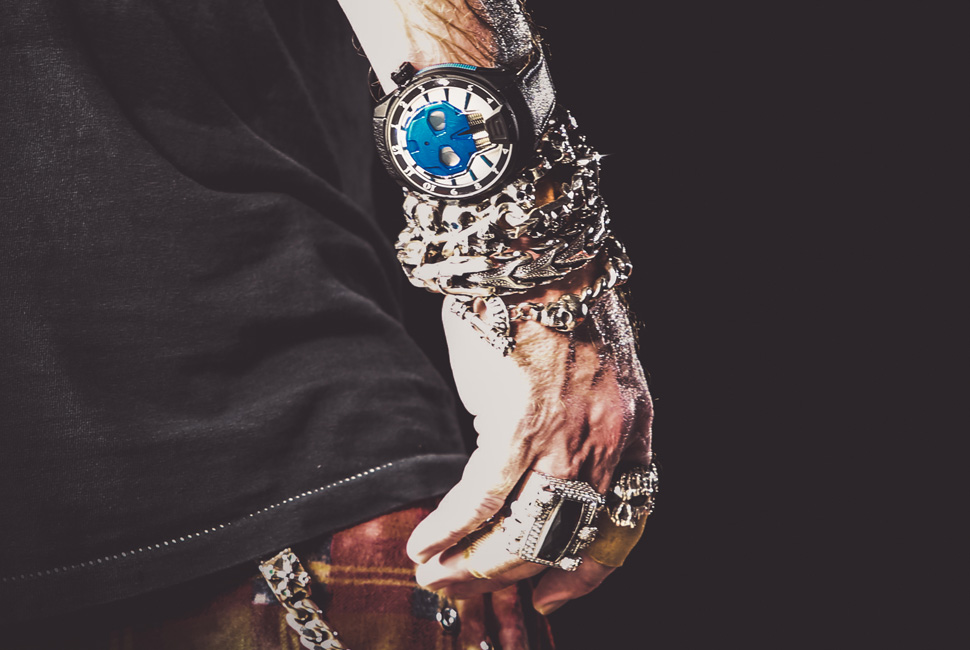
If your time can be measured so accurately, then how long before you meet your Maker, if there is one at all? Christianity requires that before your demise, you do penance for any wrongs in your life; spiritual health being paramount, with time not been so much a measured unit but a recognition of your life on earth as an interlude before the afterlife. Death comes to us all. Skulls on watches first appeared around the same time as scientific institutions and their rationalisation of the world became the new Church for society.
Watches such as Raymond Champenois’s, Paris (c.1670 currently housed at The Fitzwilliam Museum, Cambridge) or J. C. Vuolf’s silver verge watch, Germany (1665, British Museum) both feature the timekeeper within a skull. As time passed, what was once a symbol of death and grim judgement, an object of terror even, has now waned. The very aspect of measuring time that brought new civilisations and new cultures into western learning was also the element that changed the perspective of what a skull represents.
among Victorian artists, skulls represented vanity…

For some, skulls represent transformation and change, whilst for others they can determine wealth, power, strength and protection. In Mexico, skulls are decorated in garish colours and patterns to commemorate the dead. The annual “Día de los Muertos” (Day of the Dead) is a time for families to come together and celebrate the lives of those they have lost. In Tarot cards, the skull represents death as a pinnacle turning point in the narrative of life.
Although their popularity grew in late 14th – early 15th century Europe, there are some that trace their origin back to ancient Egypt. In some settings, especially among Victorian artists (Charles Allan Gilbert), skulls represented vanity; pirates, on the other hand, adopted the skull symbol to strike the fear of death into others; in Hamlet’s case, Yorick’s skull symbolized the inevitable decay of the human body.
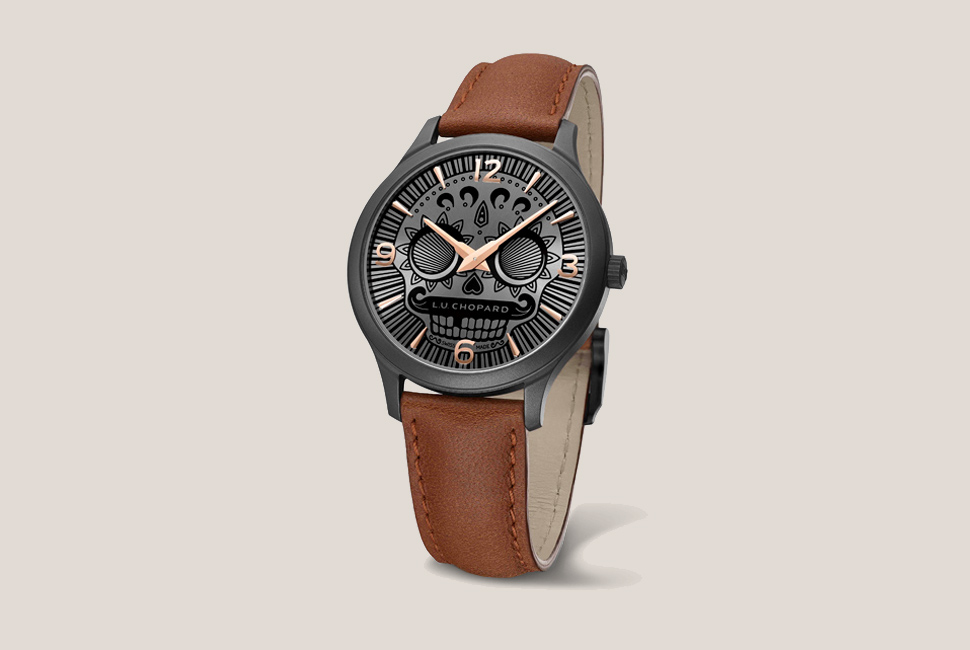
In our days, that bony framework that encloses our brain has been appropriated by different strata within society. Youth and street culture use it as an emblem of defiance; Musical genres, from punk to heavy metal, see it as rebellious. Alexander McQueen used the skull as a fashion symbol. For Damien Hirst, his platinum, diamond encrusted version represented God’s love rather than the symbol of death and terror.
As an art form, modern watchmaking tends to follow contemporary trends. A skull on your watch is no longer the representation of when your own clock stops. Instead, it may be seen as a celebration, a wish to show others your “bad arse” attitude, or even that God’s love is with you! There are several manufacturers that have placed a skull on a watch face, or, following older forms of watchmaking, a watch within a skull. So for your Halloween wristwear, here are some very special ones selected by our watch editor, Dr Andrew Hildreth.
Youth and street culture use it as an emblem of defiance…
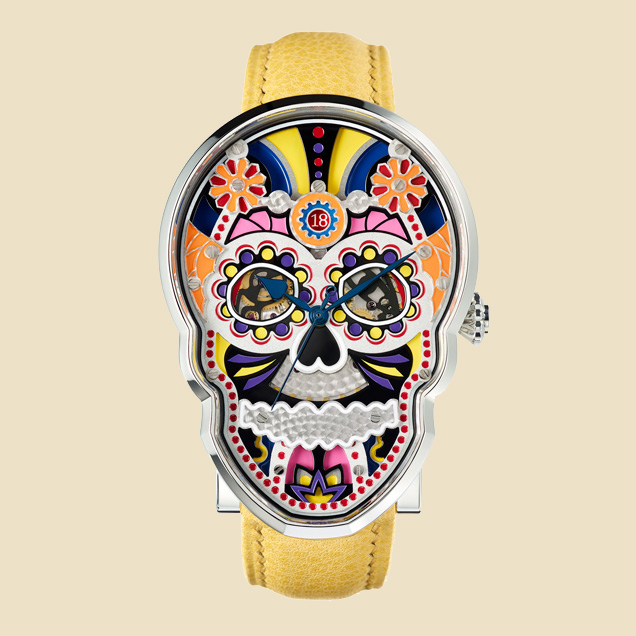
Arguably the truest bridge between the use of skulls a few hundred years ago and the current symbolism in popular culture would be the Richard Mille RM052. Initially introduced in 2012, the skull part forms the front and back plates to the movements. Since its introduction, the watch has been manufactured in a variety of metals, both for the case and the skull. As a nod to time being precious and Hirst’s For the Love of God, the skull plates have also been decorated in diamonds.
Another brand that uses the skull design as an integral part of the watch is HYT, in its SooNow. Time’s continuous flow is represented in the outline of the skull, with the eye sockets as power reserve and second counter. In keeping with the Mexican idea of decorative skulls, the watch comes in a variety of vibrant colours as limited editions, such as Guns N’ Roses’ Appetite for Destruction, a custom model created under the direction of Axl Rose in Damascus steel with a blue PVD coating.
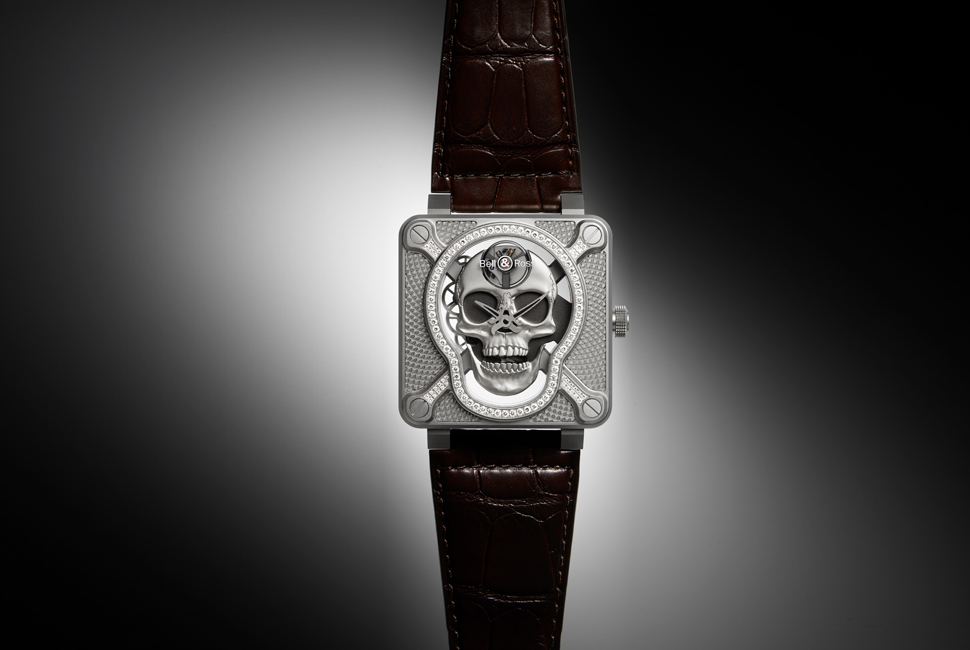
Fiona Krueger manufactures highly decorative skull-shaped watches that are very much in the spirit of the Mexican Día de los Muertos. For example, the Celebration Skull features vibrantly coloured hand-painted lacquer and Superluminova decorative detailed dials. Among the more menacing depictions of a skull on a watch face is the Bell&Ross Jolly Roger, reminiscent of the golden age of piracy.
The Jolly Roger became the uniform symbol independent of nationality that united criminals under one flag and was used indiscriminately to strike fear into the heart of the seaman on the ships they pursued. Last year, Bell&Ross produced the BR 01 Laughing Skull Light Diamond, where the jaw moves as the watch is being wound, demonstrating mirth at your own demise.
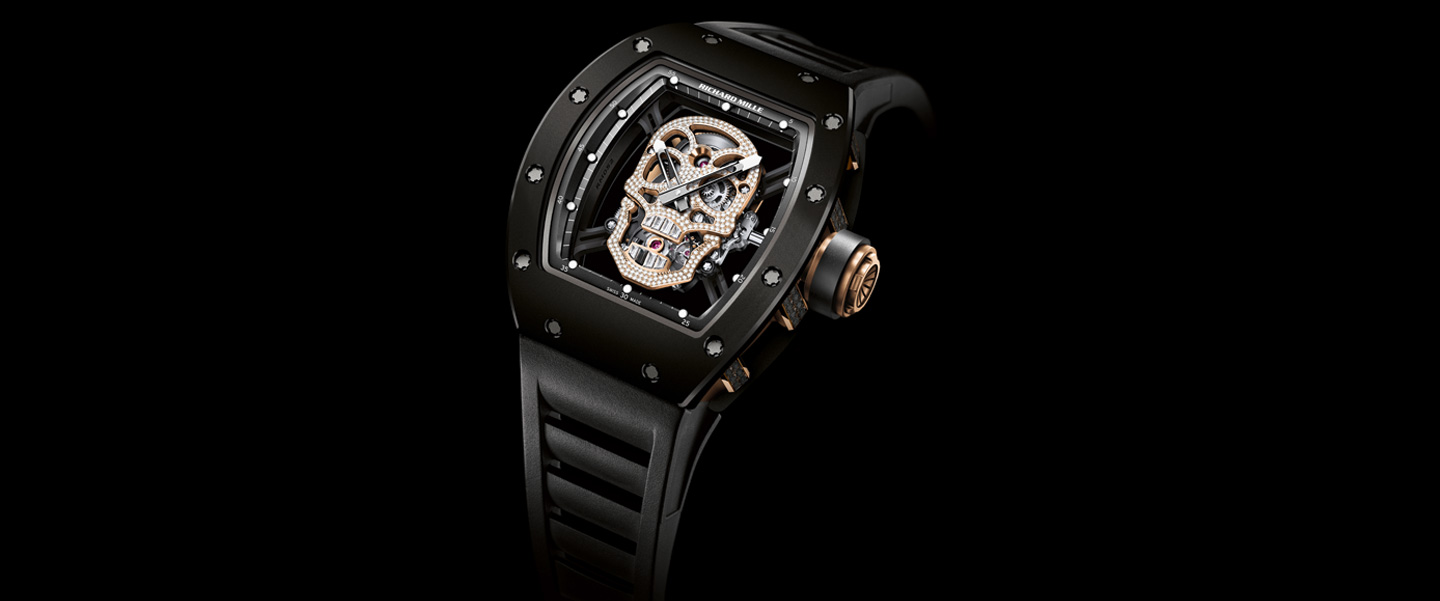
Finally, and just in time for this year’s Halloween, Chopard have released Vanitas (Skull One), a limited edition watch adorned with a Mexican calavera as a tribute to the Day of the Dead.
Given the name of the watch, a return to the skull seems to symbolise the transience of life and the certainty of death. The dial results in a beautiful combination of dark hues thanks to its lacquered finish and gold hour-markers.
www.britishmuseum.org
www.fitzmuseum.cam.ac.uk
www.bellross.com
www.richardmille.com
www.hytwatches.com
www.fionakruegertimepieces.com
www.chopard.com









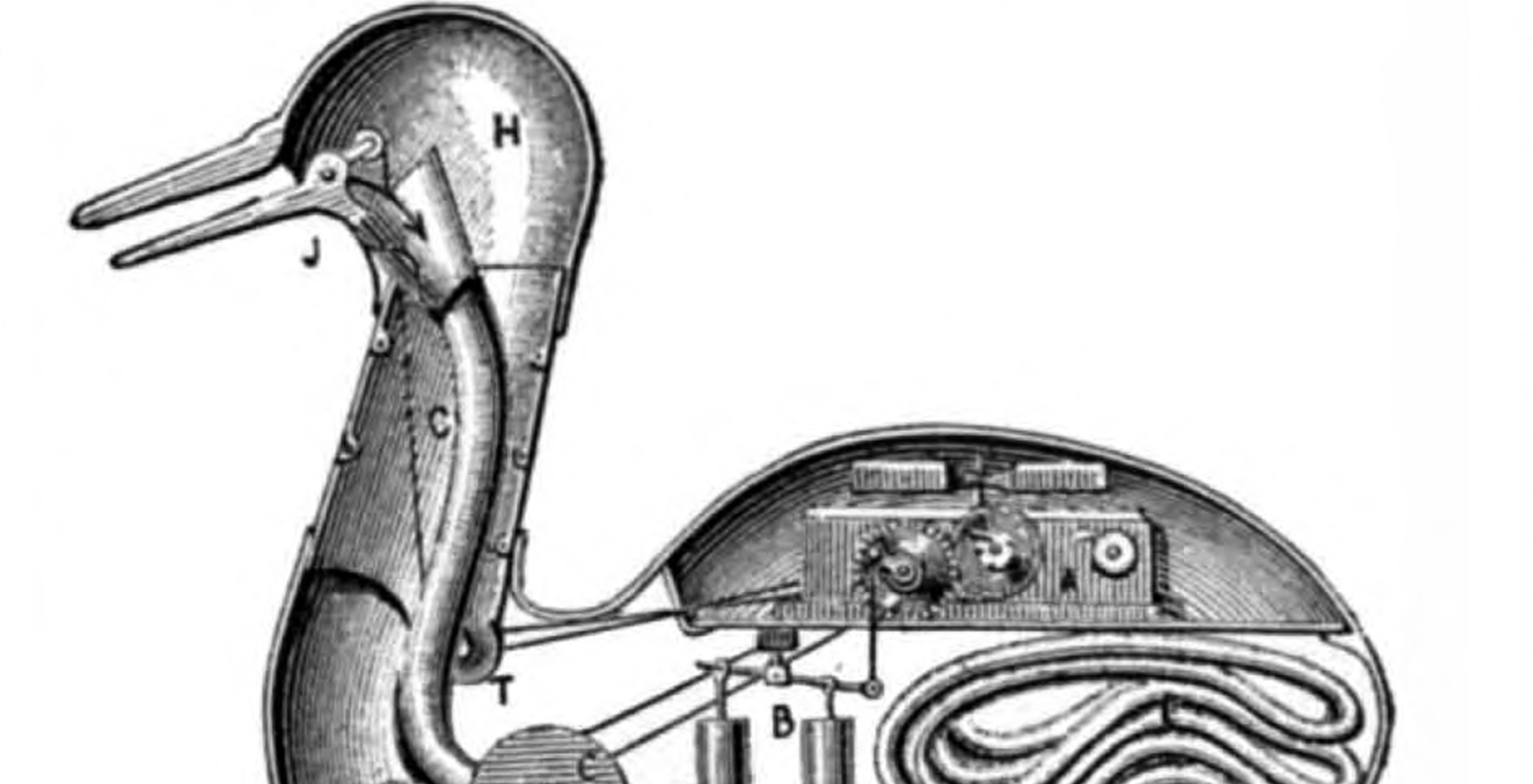



Show Comments +